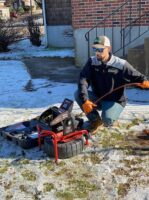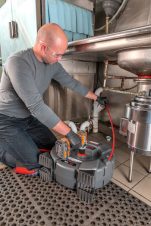Having a proper drainage system is imperative to protecting your home and avoiding expensive water damage, especially during rainstorms. Without quality drainage, water will gather in your home’s yard, ruining its foundation, damaging its foundation, and drawing insects. Here are important strategies for pinpointing and remedying drainage problems before they result in major repair bills Read more
roots

Having a proper drainage system is imperative to protecting your home and avoiding expensive water damage, especially during rainstorms. Without quality drainage, water will gather in your home’s yard, ruining its foundation, damaging its foundation, and drawing insects. Here are important strategies for pinpointing and remedying drainage problems before they result in major repair bills.
Improper Grading Within Your Home
The sloping or level of the land surrounding your home is referred to as grading. Incorrect grading can lead to surface craters that could trap water, or even cause it to flow to your home. Damaging your lawn and attracting mold, termites, mosquitoes, and other pests. Re-sloping sections of your home’s yard will aid in redirecting the course of water. However, if doing this doesn’t solve the problem, installing a dry well or French drain will help distribute the water over a vast area.

Downspout Problems
By installing downspouts, you can direct the water flow away from your yard. If you notice water gathering directly underneath any downspout after a storm, then it was either improperly installed or too short. With time, this pooling water will trickle into your foundation, resulting in basement flooding or foundation cracks. If the downspouts in your home drain are close to its foundation, then you should consider installing extensions to aid in preventing soil erosion, tripping hazards, and pooling water. To do this, you’ll need a professional plumber. If you reside in Australia, DCM Plumbing & Drainage is a plumber on the Gold Coast that could get this done.
Incorrect Landscaping
The placement of walkways and patios, the setup of your home’s garden, and other certain DIY home projects can unintentionally result in water drainage problems. In your garden setup, ensure you slope the mulch and topsoil away from the house. Using gravel and rocks to line your garden bed can also aid in diverting the flow of water away from your home and toward a drain. If you are looking to add a patio or anything with a solid surface to your home, contact landscaping professionals for better installation.
Clogged Gutters
Regularly cleaning and clearing your gutters is a fundamental part of ensuring functional water drainage in your home. Blocked gutters can overflow, causing water to flow into your home’s yard and gather close to your home’s foundation. Besides regularly clearing your gutters, installing gutter covers will aid in preventing sticks, leaves, and other debris from gathering up and stopping water from flowing away from the house.
Obstructed or Broken Sewer Pipes
If water is incorrectly routed from your home’s gutters, the resulting soil erosion will affect the stability of your foundation. Concrete slab dislocation or minor sinking can result in contaminated water, broken pipes, and plumbing safety risks. Roots can invade and block pipes, causing more drainage problems. The first step to dealing with this is by identifying the broken pipes. Consider hiring a professional to carry out a sewer scope inspection.
Homeowners often overlook the drainage system, which can cause several major and irreversible issues if left unattended. However, with these strategies, you can avoid drainage problems and save yourself a lot of money.
